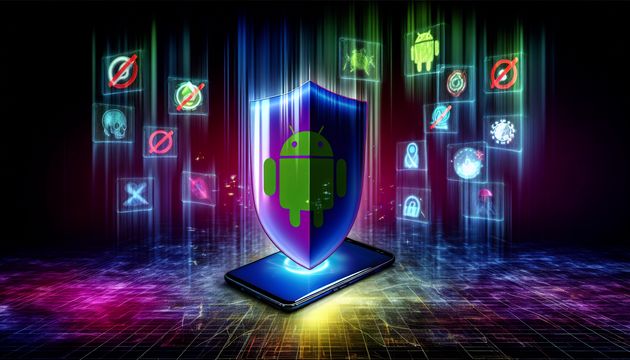
Understanding and Mitigating the Cisco Smart Licensing Utility Vulnerability
The discovery of a critical flaw in the Cisco Smart Licensing Utility (CSLU), identified as CVE-2024-20439, has sent ripples through the cybersecurity community. This vulnerability, involving an undocumented static user credential for an administrative account, allows attackers to gain unauthorized access to systems via the CSLU app’s API. Cisco first disclosed this flaw in September 2024, and it has since been actively exploited, raising significant concerns about network security (Bleeping Computer). The vulnerability is particularly alarming because it provides attackers with backdoor-like access, enabling them to control the API and potentially move laterally within networks (Security Online).
Understanding the CSLU Vulnerability and Its Exploitation
Overview of the Vulnerability
Imagine leaving a spare key under the doormat of your house. This is similar to what happened with the Cisco Smart Licensing Utility (CSLU) vulnerability, identified as CVE-2024-20439. This critical flaw involves an undocumented static user credential for an administrative account, essentially a ‘backdoor’ that allows unauthenticated attackers to remotely access unpatched systems with administrative privileges via the CSLU app’s API. The flaw was first disclosed by Cisco in September 2024 and has since been actively exploited in the wild (Bleeping Computer).
The vulnerability is particularly concerning because it provides attackers with backdoor-like access to the CSLU application, enabling them to control the API, make configuration changes, and potentially move laterally within the network. The static credential, which was publicly disclosed shortly after Cisco’s advisory, is embedded within the application, making it a significant security risk (Security Online).
Exploitation Mechanism
The exploitation of CVE-2024-20439 is facilitated by the presence of a hardcoded administrative credential in the CSLU software. An unauthenticated attacker can exploit this backdoor by accessing the API endpoint /cslu/v1, using the static credential (cslu-windows-client:Library4C$LU) to gain administrative access. This allows attackers to manage services or extract sensitive data from affected systems (Cyber Press).
In addition to CVE-2024-20439, attackers are also exploiting a second vulnerability, CVE-2024-20440, which is an information disclosure flaw. This vulnerability allows unauthenticated users to extract sensitive data, including API credentials, by sending crafted HTTP requests to CSLU endpoints. The combination of these two vulnerabilities significantly increases the risk to affected systems (Daily Security Review).
Impact on Affected Systems
The impact of these vulnerabilities is severe, as they pose significant risks to organizations using affected versions of the CSLU software. Both vulnerabilities have been rated with a CVSS score of 9.8, indicating their critical nature. The flaws affect versions 2.0.0, 2.1.0, and 2.2.0 of the utility, with the most recent version 2.3.0 confirmed to be unaffected (Sensor Tech Forum).
The exploitation of these vulnerabilities can lead to unauthorized access to sensitive information, disruption of services, and potential lateral movement within the network. This underscores the need for immediate remediation to protect against active exploitation (Cisco).
Response and Mitigation Strategies
Cisco has released software updates to address these vulnerabilities, and organizations are strongly urged to upgrade to a fixed software release to remediate the issues. There are no workarounds available for these vulnerabilities, making the application of patches critical to securing affected systems (Bleeping Computer).
In addition to applying patches, organizations should conduct thorough security assessments to identify any potential exposure to these vulnerabilities. This includes reviewing network configurations, monitoring for unusual activity, and implementing additional security measures to protect against exploitation (The Cyber Express).
Broader Implications and Lessons Learned
The discovery and exploitation of the CSLU vulnerabilities highlight the ongoing challenges organizations face in securing their systems against sophisticated cyber threats. The presence of hardcoded credentials in software applications underscores the importance of secure coding practices and regular security audits to identify and address potential vulnerabilities before they can be exploited by attackers (Security Online).
Furthermore, the active exploitation of these vulnerabilities serves as a reminder of the need for organizations to maintain up-to-date security measures and to respond swiftly to security advisories. By staying informed and proactive, organizations can better protect themselves against the evolving threat landscape (Cyber Press).
In summary, the CSLU vulnerabilities represent a significant security risk that requires immediate attention and action from affected organizations. By understanding the nature of these vulnerabilities and implementing appropriate mitigation strategies, organizations can reduce their exposure to potential cyberattacks and safeguard their critical systems and data.
Final Thoughts
The CSLU vulnerabilities underscore the critical need for robust cybersecurity measures and proactive vulnerability management. The presence of hardcoded credentials in software applications highlights the importance of secure coding practices and regular security audits. Organizations must remain vigilant, applying patches promptly and conducting thorough security assessments to mitigate risks (Cisco). By staying informed and responsive to security advisories, organizations can better protect themselves against evolving threats and safeguard their critical systems and data (Cyber Press).
References
- Bleeping Computer. (2024). Cisco warns of CSLU backdoor admin account used in attacks. https://www.bleepingcomputer.com/news/security/cisco-warns-of-cslu-backdoor-admin-account-used-in-attacks/
- Security Online. (2024). CISA warns of active exploitation of Cisco Smart Licensing Utility flaw. https://securityonline.info/cisa-warns-of-active-exploitation-of-cisco-smart-licensing-utility-flaw/
- Cyber Press. (2024). Cisco Smart Licensing attack. https://cyberpress.org/cisco-smart-licensing-attack/
- Daily Security Review. (2024). Critical Cisco Smart Licensing Utility flaws exploited in attacks. https://dailysecurityreview.com/security-spotlight/critical-cisco-smart-licensing-utility-flaws-exploited-in-attacks/
- Sensor Tech Forum. (2024). CVE-2024-20439: Cisco Smart Licensing flaws. https://sensorstechforum.com/cve-2024-20439-cisco-smart-licensing-flaws/
- The Cyber Express. (2024). CVE-2024-20439 and CVE-2024-20440. https://thecyberexpress.com/cve-2024-20439-and-cve-2024-20440/



